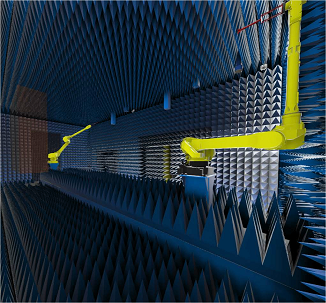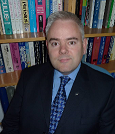Emerging Technologies: The Impact of Modern Robotics, Data Analysis, and CEM Simulation on Antenna and EMC Measurements in 2021 and Beyond!
IEEE EMC Society Multi-Chapter Meeting - Supported by the IET
The Los Angeles, Seattle, Central Texas, Central New England, Phoenix, Santa Clara, San Diego, Syracuse, SE Michigan, Vancouver BC, Benelux, Buenos Aires, Italy, Poland, Switzerland, and UK/Ireland EMC Chapters Announce a LIVE Webinar: Emerging Technologies: The Impact of Modern Robotics, Data Analysis, and CEM Simulation on Antenna and EMC Measurements in 2021 and Beyond!

Join us at this free to attend LIVE webinar with industry experts in the field of Antenna and EMC measurements. All IEEE/IET members and guests are welcome to attend, but you must register in advance per the webinar link below.
In addition to our speakers shown below, we are honored to have Zhong Chen, Director of RF Engineering with ETS-Lindgren and past Distinguished Lecturer with the IEEE EMC Society, present: Extending the Usable Low Frequency Range of an Anechoic Chamber for Antenna Calibrations Using a Time Domain Deconvolution Filter. Abstract: It is usually impractical to calibrate antennas in an anechoic chamber down to the VHF frequency range, because absorbers do not perform adequately at these frequencies. Time domain gating can be used to the extent that the antenna ring-down time is short enough, and the reflections are far enough away, so that a gate can be applied without cutting into the antenna intrinsic response. Although it could be possible to apply time domain gating at a closer distance in many chambers, it is typically not feasible to do so in the far field where the path lengths of the reflected signals are too close to that of the direct signal. In this study, we investigate calibrating broadband biconical antennas from 75 MHz to 2 GHz in a chamber designed for above 1 GHz measurements (in which the absorbers have severely degraded performance in the VHF frequency range, and chamber walls are too close to be gated out directly) using time domain deconvolution filter before a gate is applied. After applying the deconvolution filter acquired from a 3 m measurement in the same chamber, we successfully obtained the free space response at a far field distance (e.g., 8 or 9 m) for biconical antennas operating from 75 MHz to 2 GHz.
We are also excited to have the Chair of the IEEE EMC Seattle Chapter, Dennis Lewis with The Boeing Company, as our webinar host and moderator. Dennis received his BSEE degree with honors from Henry Cogswell College and his MS degree in Physics from the University of Washington. He has worked at Boeing for 32 years and is recognized as a Technical Fellow, leading the enterprise antenna measurement capability for Boeing Test and Evaluation. He currently has leadership and technical responsibility for the primary RF, Microwave, and Antenna Metrology labs. Dennis holds 10 patents and is the recipient of the 2013 and 2015 Boeing Special Invention Award. He is a member of the IEEE and several of its technical societies including the Microwave Theory and Techniques Society (MTT-S), the Antennas and Propagation Society and the Electromagnetic Compatibility (EMC) Society. He serves as a Board Member and is a past Distinguished Lecturer for the EMC Society. He is a Senior Member, served as Vice President on the Board of Directors for the Antenna Measurements Techniques Association (AMTA), and chaired its annual symposium in 2012. Dennis is a part time faculty member teaching a course on Measurement Science at North Seattle College and is chair of the Technical Advisory Committee. His current technical interests include aerospace applications of reverberation chamber test techniques as well as microwave measurement systems and uncertainties.
Date and Time
Location
Hosts
Registration
-
 Add Event to Calendar
Add Event to Calendar
Loading virtual attendance info...
- Contact Event Hosts
-
Questions? Contact Janet O'Neil at j.n.oneil@ieee.org
- Co-sponsored by / Supported by the Institution of Engineering and Technology (IET)
Speakers
 Professor Stuart Gregson of Next Phase Measurements, LLC - Queen Mary University of London
Professor Stuart Gregson of Next Phase Measurements, LLC - Queen Mary University of London
Traditional to Modern Antenna Test Environments: Overview of a New Dual Multi-Axis Robotic Antenna Test System
Abstract: Traditional antenna test facilities are designed with a specific measurement application in mind. As a result, these facilities tend to have fixed measurement geometries with much of the range performance analysis being performed only once, during the design phase of the test facilities implementation. Modern antenna measurement ranges employing multi-axis robotic positioners provide a near limitless degree of re-configurability in terms of measurement types and scan geometries. This drives an ongoing need to evaluate each unique setup and application. Model Based Systems Engineering and Development (MBSE/MBD) approaches can be employed to dramatically reduce the time, effort, and cost associated with the test development and validation phases of a given program. This presentation provides an overview of a new dual multi-axis robotic antenna test system that utilizes the novel coordinated use of a pair of 6-axis robots and MBSE/MBD system engineering within its development. A detailed description of this system that considers the mechanical, RF, safety, and data processing aspects of the system is presented. The use of this system in the acquisition of spherical, cylindrical, and variable orientation planar near-field data as well as far-field and extrapolated gain measurements is presented and discussed with the use of CEM during the development program being highlighted.
Biography:
Professor Stuart Gregson has more than twenty five years of experience working in the space, aerospace, and communications sectors and is currently Director of Operations and Research at Next Phase Measurements LLC, and an honorary visiting professor in the School of Electronic Engineering and Computer Science at Queen Mary University of London. He received his BSc degree in Physics in 1994 and his MSc degree in Microwave Solid State Physics in 1995 both from the University of Portsmouth. He received his PhD degree in 2003 from Queen Mary University of London with near-field antenna measurements as his main subject area. Prof. Gregson has developed special experience with near-field antenna measurements, finite array mutual coupling, computational electromagnetics, installed antenna and radome performance prediction, compact antenna test range design & simulation, electromagnetic scattering, 5G OTA measurements and has over 100 peer-reviewed papers on these topics regularly contributing to and organizing industrial courses on these subject areas. At the end of 2007 he was the lead author of a research text entitled, Principles of Planar Near-Field Antenna Measurements, and in 2014 he co-authored a second text, Theory and Practice of Modern Antenna Range Measurements, which is now entering its 2nd edition. He is a Fellow of AMTA, a Fellow of the Institution of Engineering and Technology, a Fellow of the Institute of Physics and is a chartered Engineer and Physicist. In 2018, Prof. Gregson was elected to the AMTA Board of Directors where he is currently serving as Treasurer.
Address:United Kingdom
 Mr. Jason Bommer of Ansys
Mr. Jason Bommer of Ansys
An Overview of Hybrid Computational Techniques for Antenna Measurement System Design
Abstract: Model-based systems engineering (MBSE) affords significant benefits to the design and optimization of antenna measurement and calibration systems. Through complementary numerical techniques such as the finite element method (FEM), integral equations (IE), finite element boundary integral (FEBI), as well as shooting and bouncing rays (SBR), one can gain significant insight on performance even before the measurement facility is constructed or the system fully configured. This can reduce or eliminate significant test burden such as initial reference measurements along with associated costs. Furthermore, by combining full wave and asymptotic techniques it is feasible to construct virtual prototypes that are computationally practical even at enormous scale and electrical size. Along with ever-increasing capacity for numerical simulation on high performance computing (HPC) and cloud infrastructure, the application of a hybrid technique appropriately matches problem size with no compromise on accuracy.
Biography:
Mr. Jason Bommer is a Lead Application Engineer with Ansys, providing technical support in high frequency electromagnetics (EM) and Radio Frequency Interference (RFI) applications. Jason holds a BS degree in Physics from the University of New Orleans and MS degree in Applied Physics from the University of Washington in Seattle. He has over 20 years of experience developing and applying computational electromagnetic tools to a wide variety of high frequency problems. Prior to Ansys, Jason served as an electromagnetics engineer with Boeing Research and Technology, where he supported multiple programs in the defense, space and commercial business units. He holds publications and patents in sensors, energy harvesting, and nondestructive inspection techniques. Jason is also an adjunct instructor at the School of Industrial Design, Engineering and Art (IDEA) in Tacoma WA, where he teaches physics-based simulation and virtual prototyping.
Address:Seattle, Washington, United States
Agenda
8:00 am PST Welcome and Announcements – Mr. Dennis Lewis, Technical Fellow, The Boeing Company, Seattle, WA; Chair of the IEEE EMC Society Seattle Chapter
8:05 am Traditional to Modern Antenna Test Environments: Overview of a New Dual Multi-Axis Robotic Antenna Test System Highlighting the Impact of Modern Robotics and CEM Simulation – Professor Stuart Gregson, Director of Operations and Research, Next Phase Measurements LLC, Garden Grove, CA
8:30 am Extending the Usable Low Frequency Range of an Anechoic Chamber for Antenna Calibrations Using a Time Domain Deconvolution Filter – Mr. Zhong Chen, Director of RF Engineering, ETS-Lindgren, Cedar Park, TX
8:50 am An Overview of Hybrid Computational Techniques for Antenna Measurement System Design By Mr. Jason Bommer, Lead Application Engineer, Ansys, Seattle, WA
9:10 am Q&A with the Speakers – Moderated by Mr. Lewis
9:30 am Wrap Up/Final Comments
Register at: https://attendee.gotowebinar.com/register/4341894863474271759

